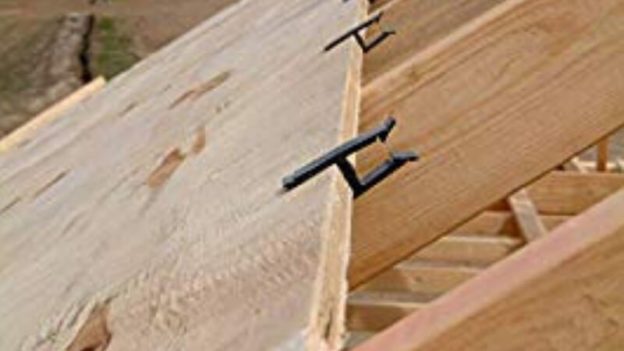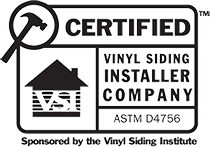There are loads of different types of roofs, so if you’re just learning about them for the first time it’s not surprising that you might never heard of roof sheathing. And it might be a bit confused. Not only are there loads of different TYPES of roofs, but there are also plenty of different components. Not every roof has all of them, but some are much more common than others.
So if you’re having roof trouble for the first time, or are a new homeowner, you might be trying to brush up on a few different aspects of roofing. This has brought you to the question, what is roof sheathing?
And if that’s something you want to know the answer to, then you’re in the right place. In this article, we’re going to tell you everything you need to know about roof sheathing:
- We’ll tell you what it is
- what issues are associated with it
- how to look after it and more.
Practically every type of roof has roof sheathing, so it’s a really important component of most roofs and one you need to look after. This article is all about roof sheathing. So let’s get started.
What is roof sheathing?
Roof sheathing is also known as roof decking in some areas and by some roofers. But this isn’t to be confused with garden decking that you put your outdoor tables and chairs on. Roof sheathing or decking is a hard and strong layer of wood that is normally fixed to the trusses and joints of your roof.
These wooden boards are important, and they help keep shingles attached to your roof. A roofer will normally attach standard shingles to the roof sheathing on your roof. Most roofs have shingles these days, so you can see how common roof sheathing is.
Roof sheathing tends to be made from plywood. It can also be made from another type of wood known as OSB, which stands for Oriented Stand Board. OSB can be lighter than plywood and also cheaper, but also not quite as strong. It can depend on what sort of shingles you have, where you’re located, or the cost implications of each type of material as to whether you’ll have OSB or plywood roof sheathing. However, both these need to be strong and durable.
Plywood is much more durable but also more expensive. Your roofer might be able to recommend which sort is better for your roof and cost preferences. Most roofs these days actually use OSB and this works well most of the time. Slate or concrete tiles will require a stronger plywood, so it depends on the type of shingles you’ve got or are having.
Roof sheathing’s main function is to simply strengthen your roof and offer a support system for shingles and other materials. You can think of roof sheathing as the foundation to the rest of the roof, even though it will obviously sit on the actual foundation of the roof the beams.
What are the benefits of roof sheathing?
Roof sheathing has plenty of benefits for your roof. But what are they? Let’s have a look.
1. Provides support and stability As we’ve already touched on, one of the main benefits of roof sheathing is that it gives a lot of support to the rest of your roof. This makes it important for the installation of shingles, and especially heavy slate tiles.
Roof sheathing will help spread wight evenly across the entire structure of the roof, making the structure more sound. Sheathing will be fixed to supporting beams to make sure that snow and other heavy loads don’t cause major issues with your roof. They also provide the support for heavy shingles and make sure that the entire roof can take an even spread of weight to keep the structure in a good state.
2. Prevents leaks Another benefit of roof sheathing that you might be surprised to hear about is that they actually prevent leaks into your roof. That’s because the additional layer of boarding helps give an extra layer of protection against water and leaks. While shingles do tend to have a treatment that helps give some water protection, this isn’t always enough, and sheathing can give another layer of help.
Keeping the interior of your roof safe from leaks is important, especially if you live somewhere that gets a lot of heavy rain. That’s another reason why roof sheathing is so beneficial, because it can help increase the life of your roof by not
succumbing to water damage too easily or early in it’s lifespan.
3. Can protect against fires If these two benefits weren’t enough, roof sheathing can also be a good layer of protection against firest. While sheathing will not make your roof completely fireproof, many sheathing materials come with fire-resistant treatments and can help stop fires spreading.
When do you need new roof sheathing?
If you’ve got an old roof, you might need new roof sheathing, It’s an important part of any roof, so it’s important you keep an eye on your sheathing and can tell if it needs fixing, repairing or replacing. You’ll normally need to replace your sheathing if you re-roof your home for any reason. However, there might be other times when new sheathing is required.
If you can actually see damage or broken points on your sheathing, then it will obviously need replacing. Although sheathing is sturdy and durable, it can break if it has been put under a lot of pressure like from a tree branch or even if you stand on your roof.
You should be able to see broken sheathing quite easily, especially as your roof may sag. Other indications of broken sheathing include sawdust or pieces of wood that have fallen off in your roof cavity or attic.
Another indication of broken sheathing is water damage. This can sometimes be a bit harder to spot, but leaking could be a signal. Other indicators of water damage to your sheathing include puddles and stains.
Other signals of broken sheathing include ceilings sagging, light coming through the roof or visible rot. All of these might mean you need to consult a professional and potentially get new roof sheathing installed.












